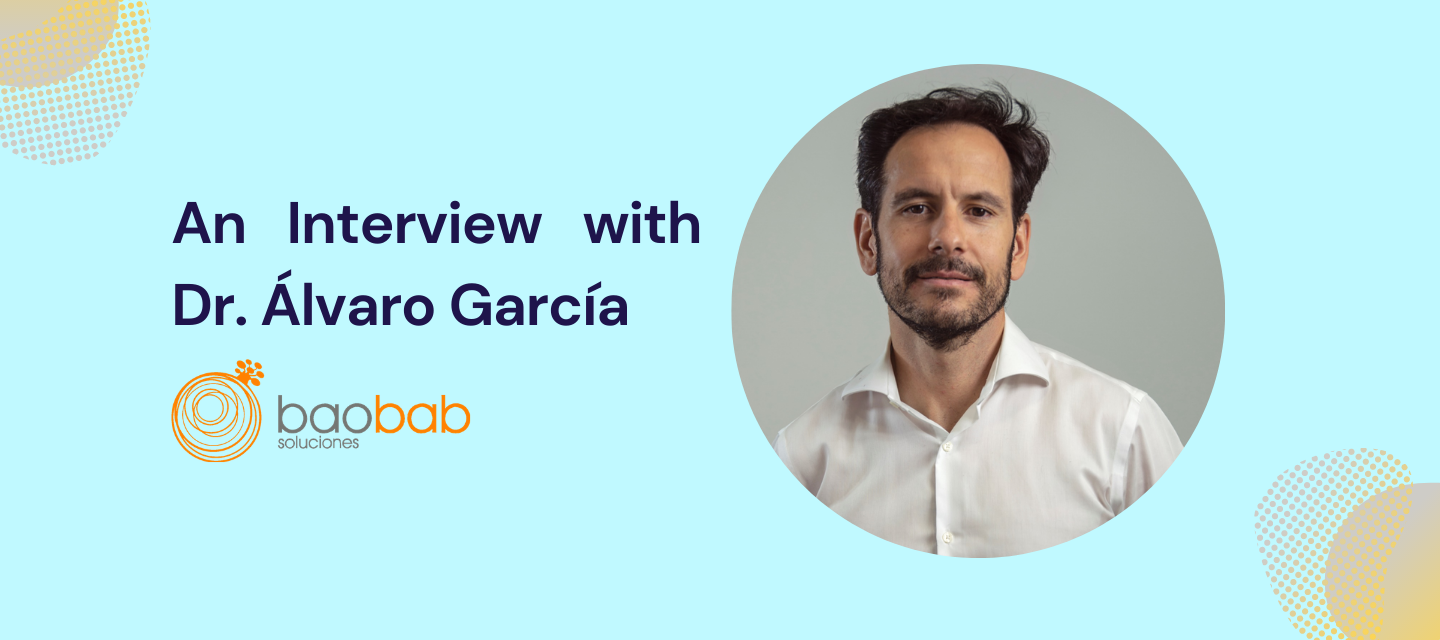As part of our interview series with AIMMS partners, we spoke with Dr. Álvaro García, Co-Founder at baobab soluciones. baobab’s talented specialists combine the latest mathematical techniques to develop solutions for industrial-scale problems. They help top-tier companies and organizations improve their decision making.
Can you tell us more about your role at baobab soluciones?
I was one of the founders of baobab back in 2011, as a full-time professor at UPM ETSII. My role is so varied that we haven’t been able to find a title descriptive enough.
I hold a PhD in Industrial Engineering and I teach several courses in Operations Research and Operations Management, so I oversee all activities related to the mathematical architecture of the solutions we develop for our customers, from pre-sales to delivery acceptance.
As a professor, I also lead the internal development of our talent, which is our key differentiator. Every new hire goes through an ambitious learning process during their first year at baobab, in order to reach the quality standards that our clients love us for.
I also coordinate external training for customers, masters and PhD programs, which are in high demand; and I dedicate a lot of time to our marketing content, either writing blog posts, preparing webinars or reviewing material.
What kind of solutions do you provide?
baobab’s mission is to help the world make better decisions with the aid of mathematics. We develop tailor-made advanced analytics solutions (predictive and prescriptive analytics and discrete event simulation) for mostly Forbes Fortune 500 companies across many verticals, mainly in Spain, but also in the rest of Europe and LatAm. We provide these services for several industries: utilities, telecommunications, oil & gas, aeronautics, transportation, delivery, and logistics.
How have you seen the market evolve over time, particularly in Spain and/or Europe for example?
It has changed a great deal. We have seen an evolution in the organizations we interface with from total lack of knowledge about mathematical optimization, to having a certain interest, to sincere adoption. At first, there were only a handful of companies with good knowledge of our discipline, and it took a lot of effort to evangelize others.
Currently, there is not a lot of expertise yet, but we see a lot more appreciation for the value that we bring. We have also joined efforts with digital transformation partners like Orange and SGS, who have realized how our solutions fit and complement their enterprise service offering.
How did your partnership with AIMMS come about?
I discovered AIMMS in 2004 during my academic work at UPM. Back then, I was looking for a solution that could help me both with my research and my courses at university. I needed something flexible, intuitive and open to use different solvers. I had the chance to try many different software applications and consult colleagues worldwide, and AIMMS came in as the best option. So, when we founded baobab years later, it was the obvious choice.
How many team members at baobab work with AIMMS on a regular basis?
Half our team uses AIMMS regularly.
Can you think of an AIMMS project you’re particularly proud of?
More than one, actually. Franco Peschiera, one of my fellow co-founders, contributed to the development of AIMMS and he is even featured in the acknowledgements section of the handbook.
We also did the first global installation of AIMMS PRO, but we are particularly proud of the one we did for Repsol in Spain. It was very challenging because Repsol did not use optimization platforms at a corporate level at that time and it came together with two very demanding projects.
One of our most successful projects was one where we combined demand forecasting and supply chain optimization. A beautiful example of how prescriptive analytics complements the insights brought about by predictive analytics and fills the gap between insight and action to realize the promise of value.
Can you tell us more about the business case for optimization in this case?
In general, our projects deliver 20%-30% top line improvement. In this case, we combine demand forecasting and supply optimization, and although we cannot share many details, it works very well. Last minute orders, which can be seen as errors in our forecasting and planning, are down to zero.
What was the biggest technical challenge in this project?
Making it work for concurrent users on the same database. It seems trivial nowadays, thanks to CDM, but it was quite challenging a few years ago.
What was the biggest lesson learned?
All our customers are very familiar with data science. They have learned to see the value that optimization adds to it, a very clear ROI, and they do not compromise on quality. They have learned that optimization is an investment, not a cost, and every euro put into it returns many times over.
Check out these AIMMS resources developed by Dr. Álvaro García (@alvaroinaimms):


